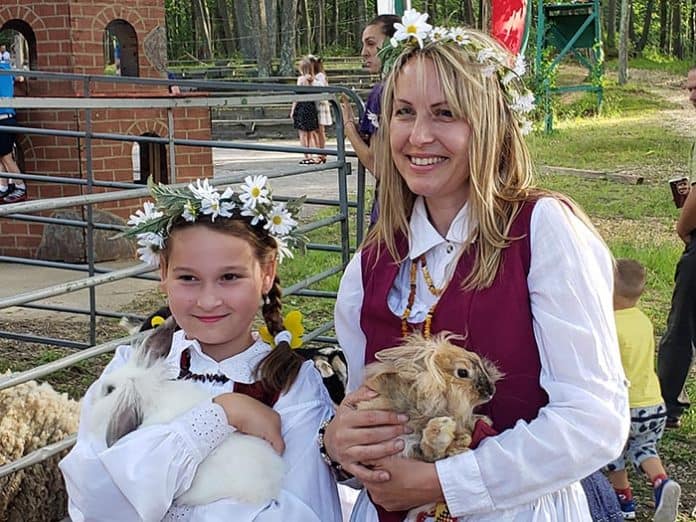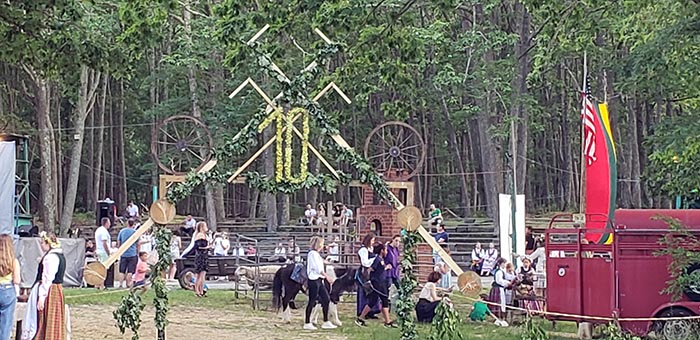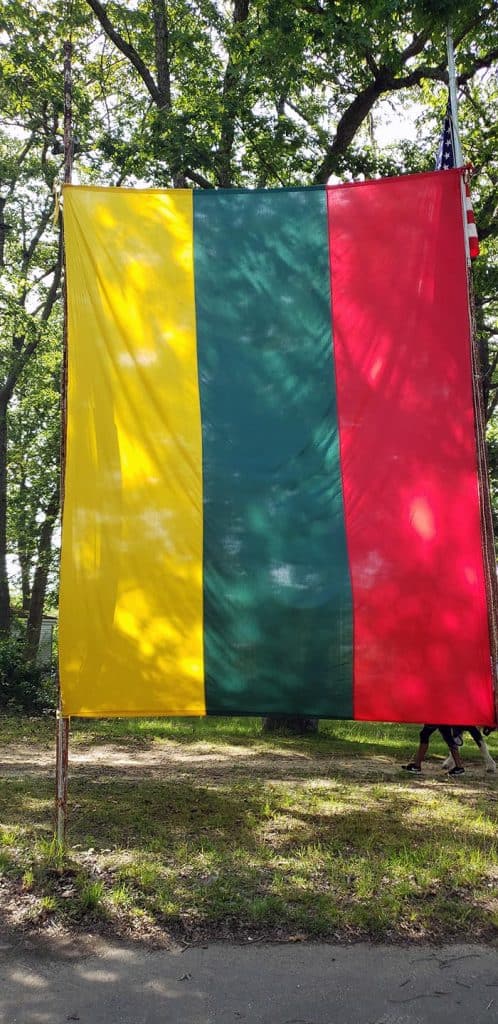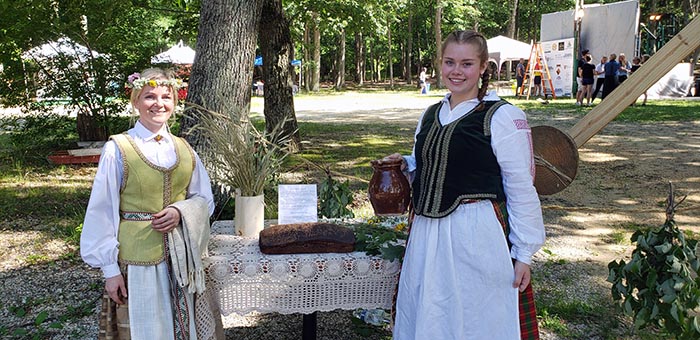
JACKSON – For a decade now, township Lithuanians and visitors from other communities have been celebrating their heritage on the grounds of the Lakewood Estonian Cultural Center, which despite its name, is located in Jackson on 4 Cross Street and East Veterans Highway.
The 10th Annual Lithuanian Festival was once again coordinated by the Central New Jersey chapter of the American-Lithuanian Community Inc.
“This event brings many people together for a celebration of our culture,” said Jackson resident Kostas Mastauskas, the president of the organization.
He added that the celebration features various representations of the elements. “We have fire, earth, water symbolized here today.”

The festival’s celebration included observing Saint Jonas’ Day, also known as Rasos (Dew Holiday), Joninės, Kupolė, Midsummer Day or Saint John’s Day all of which is a midsummer folk festival celebrated in Lithuania.
St. Jonas Day/Rasa Day, the dawn day celebration marking the longest day/shortest night of the year is normally held on June 24 and that the celebration, according to attendees, comes from a mix of Christianity and Paganism. It is celebrated in some Pennsylvania communities. Lithuania was one of the last countries in Europe to convert from pagan beliefs to Catholic Christian beliefs.
The festival drew several hundred people during the late afternoon into the evening. The event featured many Lithuanian traditions including a native dinner, singing songs and dancing in period attire.
For non-Lithuanians it served as an opportunity to learn about the country’s rich history and geography as well as its art and culinary delights.
Officially known as the Republic of Lithuania, the country is located in the Baltic region of northern-eastern Europe. Lithuania is bordered by Latvia to the north, Belarus to the east and south, Poland to the south, and Kaliningrad Oblast to the southwest and as of 2017, had a population of around 2.8 million people.
The capital city of Lithuania is Vilnius which is also the largest city in Lithuania. The nation’s official language, Lithuanian, along with Latvian, is one of only two living languages in the Baltic branch of the Indo-European language family. Many present at the festival spoke the language.

At the end of World War I, Lithuania’s Act of Independence was signed on Feb. 16, 1918, declaring the founding of the modern Republic of Lithuania.
On March 11, 1990, a year prior to the formal dissolution of the Soviet Union, Lithuania became the first Baltic state to declare itself independent, resulting in the restoration of an independent State of Lithuania after 50 years of Soviet occupation.
Loreta Mastauskiene and Greta Karakaj, both of Jackson, were among those who wore native costuming. The pair stood at the front arch as attendees entered and had a pitcher of water for a hand cleansing.
“The hand cleansing is for before you entered the gate where you leave all your troubles behind and you come in for enjoyment,” Mastauskiene said.
The event featured a variety of vendors including the Linos Lithuanian Food stand operated by Lina and Andrius Stanioniene of Toms River. The couple has provided native food to various heritage festivals since 2005.
Lina Stanioniene said that among their specialties was ‘rugine duona’ traditionally known as the centerpiece of Lithuanian cuisine.
“We also have smoked cheese and sweet cake. People like it,” Lina Stanioniene said.
The couple also served up a dark rye bread which in Lithuania is eaten more often than light wheat breads. “It is baked with no yeast whatsoever and made with sour dough and it takes 24 hours just to prepare the dough,” Andrius Stanioniene said.
The main meal included shish kabob, potato pancakes and sour kraut.
Irma Smigelskiene of Whiting came to America from Lithuania six years ago. “This is my third or fourth time at this festival. I enjoy meeting people and speaking the language. It is like a small part of Lithuania.”
She joked that “I love the potato pancakes. I’m too lazy to
make them at home.”

Children enjoyed petting animals from the Honkey Tonk Ranch this year including black ducks, goats and rabbits.
Jewelry was also offered up for the adults by Rima Jewelry and Jewelry Design by Vitalija.
Last year marked the 100th anniversary of Lithuania as a reformed nation which was noted during the festival with a visit by Lithuanian-American Community Inc. national president Siqita Simkuvieni who said the organization “has 52 chapters in the United States.”
The grounds featured a variety of flowers that were picked while some were added intoheaddresses worn by female guests at the event. The flowers were symbolic to the theme of hope and that anything is possible.






